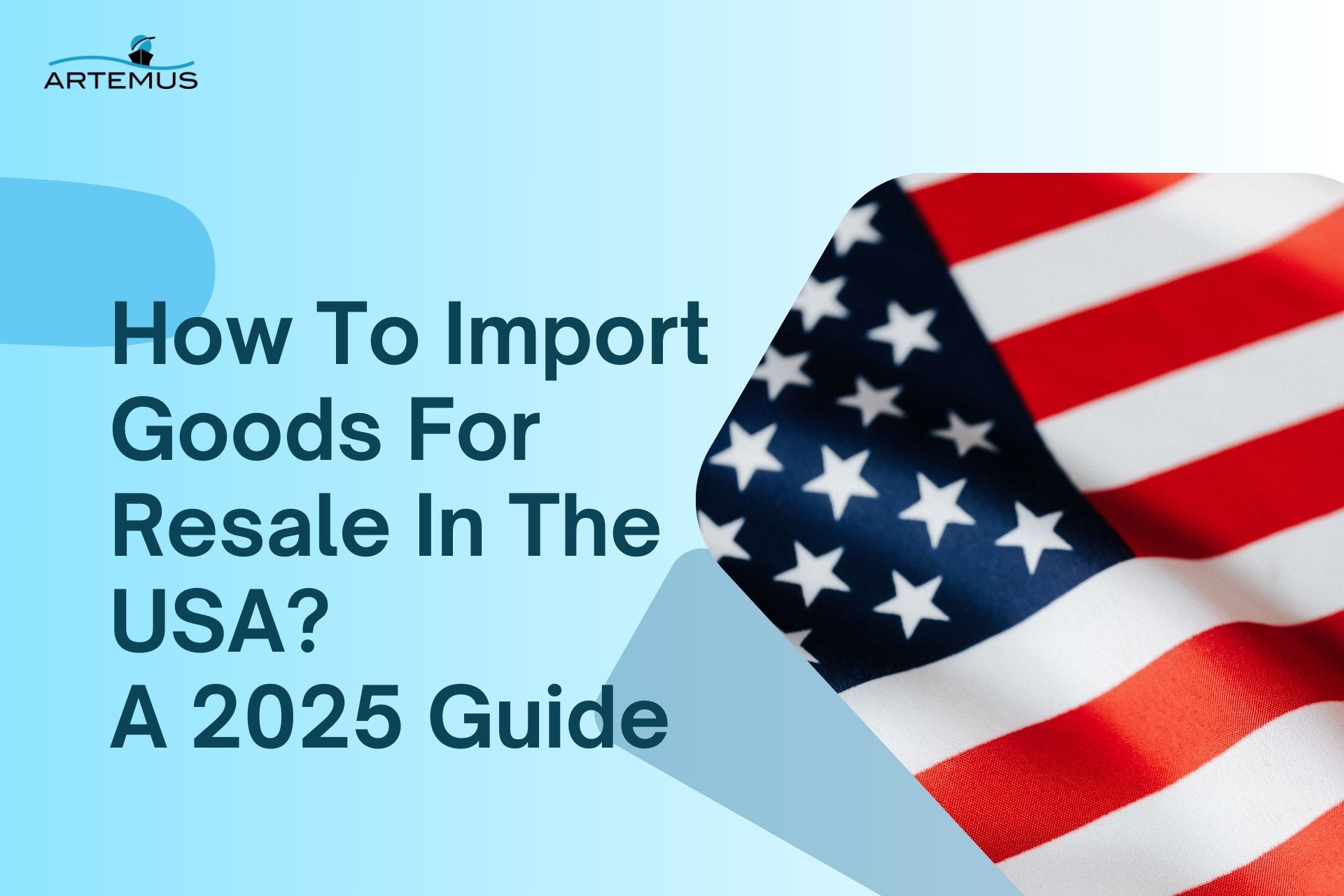
What Is Inbound Logistics & Outbound Logistics? A 2025 Guide
In the dynamic world of supply chain management, understanding the nuances of inbound and outbound logistics is crucial for operational

Navigating the intricacies of international trade involves a multitude of regulations, documentation, and classification systems. Among these, the Harmonized System (HS) Code stands out as a globally recognized framework for classifying goods traded across borders.
The HS Code in shipping serves as a standardized language that enables seamless communication between traders, customs authorities, and other stakeholders in the shipping industry. At its core, the HS Code structure systematically categorizes products into specific codes based on their characteristics, composition, and intended use.
Artemus Transportation Solutions offers cutting-edge compliance software solutions tailored to the needs of businesses engaged in global trade. With specialized software for Importer Security Filing (ISF) and Automated Manifest System (AMS) requirements, Artemus empowers businesses to navigate the complexities of international trade with confidence and ease.
Table Of Contents
In the realm of shipping, the HS Code, or Harmonized System Code, serves as the universal language that streamlines the complex process of categorizing goods traded internationally. Think of it as the passport for products, providing a standardized framework for customs authorities, traders, and governments to identify and classify items during import, export, and transit.
This system assigns a unique code to each product, structured hierarchically to encompass a wide range of goods. From electronics to agricultural products, each item is meticulously categorized, ensuring consistency and efficiency in customs procedures, tariff determination, and regulatory compliance.
Essentially, HS Codes are the cornerstone of global trade, facilitating the smooth flow of goods across borders by providing a common ground for understanding and classifying products in the dynamic world of shipping.
Related: How To Start A Freight Forwarding Business? 10 Easy Steps
The Harmonized System (HS) is an internationally standardized system for classifying goods traded across borders. It assigns a unique code to each product, facilitating uniformity in customs procedures and trade statistics worldwide.
The HS code structure is hierarchical, comprising six digits that progressively narrow down the classification of goods from broader categories to more specific ones. Here’s a breakdown of the HS code structure with an example:
Here’s an example to illustrate the breakdown of the HS code structure:
Chapter: 85 (Electrical machinery and equipment)
Heading: 85.04 (Electrical transformers, static converters, and inductors)
Subheading: 85.04.20 (Electrical transformers)
Tariff Item: 85.04.20.00 (Specific type or model of electrical transformer)
By following this hierarchical structure, customs authorities can accurately classify goods for tariff purposes, enabling efficient customs clearance procedures and facilitating international trade. Moreover, businesses can use HS codes to identify market opportunities, analyze trade trends, and comply with import/export regulations.
Related: ISF Form (Import Security Filling): Elements & Top Practices
In the intricate web of global commerce, Harmonized System (HS) Codes serve as the linchpin that ensures smooth sailing across international borders. Here’s why they’re indispensable:
HS Codes provide a standardized classification system for products traded internationally. By assigning a unique code to each item, they establish a common language that simplifies communication between traders, customs authorities, and regulatory agencies worldwide.
These codes are the cornerstone of customs clearance processes. They enable customs officials to accurately identify and assess imported or exported goods, ensuring compliance with regulatory requirements, tariffs, and duties. Without HS Codes, the clearance process would be fraught with confusion and delays, hindering the flow of goods across borders.
HS Codes play a pivotal role in determining applicable tariffs, duties, and taxes on imported or exported goods. By categorizing products into specific classifications, they help governments calculate the appropriate taxes and fees, ensuring fair and transparent trade practices.
HS Codes streamline trade documentation and procedures, making it easier for businesses to navigate the complexities of international trade. They provide a systematic framework for classifying goods, which facilitates the exchange of goods between countries, fosters economic growth, and strengthens global trade relations.
HS Codes are invaluable for compiling accurate trade statistics and monitoring economic trends. Governments, businesses, and policymakers rely on this data to analyze market dynamics, identify emerging trends, and formulate trade policies. By providing a standardized method of categorizing products, HS Codes enable stakeholders to make informed decisions that drive economic growth and prosperity on a global scale.
Related: What Is Ocean Freight Forwarding & Its Process?
When it comes to determining the correct HS Code for a product, precision is paramount. Here are some tried-and-true methods to ensure accuracy:
Related: How To Choose A Freight Forwarder? 10 Critical Aspects
HS Codes wield considerable influence over shipping costs and logistics, shaping the landscape of international trade in profound ways. Here’s a breakdown of their impact:
HS Codes serve as the foundation for calculating tariffs, duties, and taxes imposed on imported or exported goods.
The classification of a product under a specific HS Code directly affects the applicable rates, significantly impacting the overall cost of shipping.
Understanding the correct HS Code for your product is crucial to accurately predict and manage tariff-related expenses.
Accurate HS Code classification streamlines customs clearance processes, reducing the risk of delays and associated costs.
Customs authorities rely on HS Codes to assess and verify the contents of shipments, expediting the clearance of goods through ports and borders.
By ensuring compliance with HS Code requirements, businesses can avoid costly delays and disruptions in the supply chain.
HS Codes play a pivotal role in logistics planning and optimization. Knowledge of the HS Code assigned to each product allows logistics providers to anticipate and address potential challenges associated with specific categories of goods.
From selecting appropriate shipping methods and routes to arranging necessary documentation and permits, HS Code awareness enables logistics professionals to streamline operations and minimize costs throughout the shipping process.
Misclassification of goods under incorrect HS Codes can lead to costly penalties, fines, and legal repercussions. Therefore, a thorough understanding and accurate application of HS Codes are essential for mitigating compliance risks in international trade.
By adhering to HS Code regulations and guidelines, businesses can safeguard themselves against potential liabilities and ensure smooth sailing in global markets.
Strategic HS Code management can confer a competitive advantage in the marketplace.
Businesses that master the intricacies of HS Code classification can optimize their shipping processes, minimize costs, and enhance supply chain efficiency.
By leveraging HS Codes to their advantage, companies can differentiate themselves from competitors, improve customer satisfaction, and achieve greater profitability in the fiercely competitive world of international trade.
Related: How To Become A Freight Forwarder: A Stepwise Guide

Artemus Transportation Solutions specializes in providing comprehensive compliance software solutions tailored to the needs of businesses engaged in international trade. With a focus on efficiency, accuracy, and regulatory compliance, Artemus offers state-of-the-art software for Importer Security Filing (ISF) and Automated Manifest System (AMS) requirements.
The ISF software streamlines the filing process, ensuring adherence to U.S. Customs and Border Protection (CBP) regulations while minimizing the risk of non-compliance penalties. Additionally, their AMS software simplifies the submission of advance cargo information, facilitating smoother cargo clearance and reducing the likelihood of regulatory violations.
With Artemus’ compliance software solutions, businesses can navigate the complexities of international trade with confidence, knowing they have the tools to meet regulatory requirements and optimize their supply chain operations.
Related: OTI License Requirements, Costs, Renewal, & Regulations
The HS Code, or Harmonized System Code, is an internationally recognized classification system for goods traded across borders.
You can find your HS code by consulting official classification guides, using online databases, or seeking expert advice.
The HS Code for India is an 8-digit code that corresponds to the Harmonized System classification system.

In summary, the Harmonized System (HS) Code is the backbone of international shipping, simplifying customs procedures, tariff determination, and regulatory compliance. Its standardized classification system streamlines global trade, enhancing transparency and efficiency.
As businesses navigate the complexities of international commerce, leveraging the power of HS Codes is essential for success. Embracing their guidance ensures smoother sailing and greater competitiveness in the dynamic world of shipping.
Related: What Is Global Trade Compliance & Its Key Components

In the dynamic world of supply chain management, understanding the nuances of inbound and outbound logistics is crucial for operational

In today’s interconnected world, businesses rely heavily on global trade to expand their markets, access new resources, and drive growth.

Importing goods for resale in the USA presents a lucrative business opportunity, but navigating the complexities of U.S. customs regulations,
Get In Touch
Artemus’ Software Solutions for ISF, AMS, Japan AFR, eManifest Canada, & Panama B2B filings.